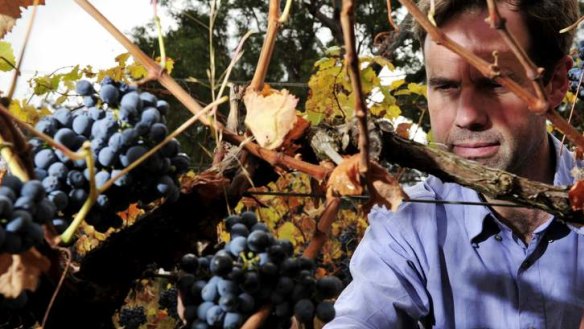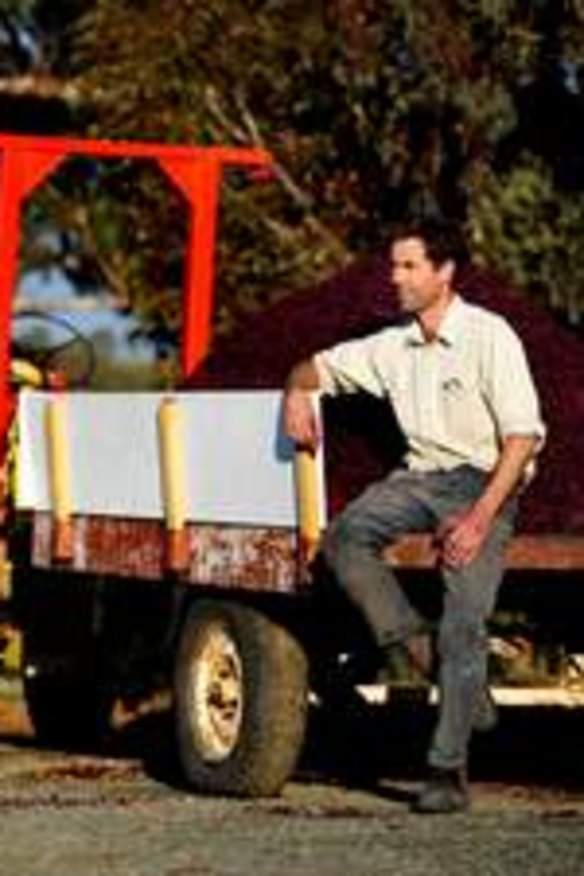Tempranillo the one to watch
The potential for this Spanish grape in Australia is huge, <b>Chris Shanahan</b> writes.

If I had to bet the house on one of the so-called ''alternative'' grape varieties, it would be Spain's tempranillo. We crush only about 3000 tonnes a year in Australia (equivalent to perhaps 225,000 dozen bottles) - a mere splash compared with the more familiar varieties.
In 2012, Australian vintners processed almost 380,000 tonnes of shiraz, 220,000 tonnes of cabernet sauvignon, 127,000 tonnes of merlot and almost 33,000 tonnes of pinot noir (much of it for bubbly). After that the volumes tail away, with just 5000 tonnes of mataro (aka mourvedre). But the tiny tempranillo crush (2818 tonnes, according to the Winemakers' Federation of Australia; 3440 tonnes, according to the Australian Bureau of Statistics) reflects neither its geographic spread, nor the growing fascination with it among vignerons and wine drinkers.
One retailer offers more than 100 Australian tempranillos (and blends), and a 2012 ABS survey lists 341 tempranillo producers. It's made in every state, with three tonnes from the ACT (two hectares of plantings, although most ''Canberra region'' vineyards are in NSW). Though widely dispersed - from Queensland's granite belt in the north to Tasmania in the south, and from the Hunter in the east to greater Perth in the west - most plantings are in warm continental climates rather than in milder coastal areas.

Tellingly, vineyards in the hot, dry climates along the Murray River in South Australia and Victoria, and the Murray and Murrumbidgee in NSW, account for a third of the 2012 tempranillo harvest. Significant plantings in these traditionally high-output, low-cost areas suggest tempranillo may already have begun its shift into the mainstream - or at least that growers in these areas, aided and abetted by winemakers, see it heading that way.
South Australia dominated production in 2012 (317 hectares, 1503 tonnes), followed by NSW (220 hectares, 1134 tonnes). The Barossa is the biggest producing region, although its 135 hectares produced a miserly 490 tonnes in 2012, a yield of just 3.6 tonnes a hectare. We could expect greater yields - perhaps double - in more favourable vintages, but the Barossa can never hope to match South Australian Riverland's almost 12 tonnes to the hectare.
Overall, tempranillo represents less than 0.5 per cent of the land given to grape vines, which makes it truly a niche, or "alternative", variety. But in Spain, it's a different story.
In Wine Grapes (Robinson, Harding and Vouillamoz, Penguin, 2012), Jancis Robinson writes: "Spain is the kingdom of tempranillo, a kingdom that extended to 206,988 hectares [greater than Australia's total area under vine] in 2008, making it the most widely planted red
variety. It is widely distributed across the country, albeit under a host of synonyms.''
Using historical and DNA evidence, the book concludes tempranillo is a native of Spain, probably originating in two adjacent regions north west of Aragon - Logrono in La Rioja and Peralta in Navarra. The vine fairly quickly found its way to Portugal, Italy, France and even to South America in the 17th century.
Spain's tempranillo-based reds, particularly those from the cooler Rioja and Ribera del Duero regions, inspired our vignerons to try the variety in Australia, including in Canberra.
Mount Majura winemaker Frank van de Loo says the variety is well suited to his site, with Canberra having ''high levels of climatic similarity to the leading Spanish regions Rioja and Ribera del Duero''.
In 2010, in concert with other tempranillo producers, Van de Loo introduced TempraNeo workshops (see tempraneo.com.au) to study and promote the variety. The group held workshops again in 2011 and 2013.
Courtesy of Van de Loo, I tasted the 2012 vintage wines from the workshop and threw in the recently released Quarry Hill 2013 (Murrumbateman). The line-up covered a spectrum of climates - Canberra, Barossa, Wrattonbully, Porepunkah (near Bright, Victoria), Heathcote, Alpine Valleys, Adelaide Hills and McLaren Vale.
The wines varied widely in style - from the medium-body, spicy elegance of Van de Loo's Mount Majura 2012, to the confronting savouriness and puckering tannins of Don Lewis and Narelle King's Tar and Roses 2012. And one outrider, Quarry Hill 2013, made by Alex McKay, revealed a contrasting, bright and fleshy face of the variety, bottled young and fresh.
Terrific tempranillos
■ Mount Majura 2012, Canberra, $42
Frank van de Loo's 10th vintage of the variety rises to the top - appealing for its just-ripe cherry and plum varietal flavour, medium-body, elegant structure and attractive spice and pepper notes. A day after the tasting, we paired it deliciously with baked salmon in pastry, cooked by Linda Peek (cafecat.com.au), which would have been overwhelmed by other tempranillos.
■ Quarry Hill 2013, Canberra district, $18
Juicy and strawberry-musk fruit, buoyant and plush, with substantial tannins washing through.
■ Running with Bulls 2010, Barossa, South Australia, $16-$22.95
Shows the Barossa's ripe, generous fruit flavour and comparatively soft tannins, though somewhat firmer than in the region's shiraz.
■ Running with Bulls 2012, Wrattonbully, South Australia, $16-$22.95
Same maker (Yalumba) as the Barossa wine, but the fruit is more fragrant and reminiscent of summer berries, with elegant structure of fine but firm tannins.
■ Mayford 2012 Porepunkah, Victoria, $35
Savoury and acidic, with blueberry-like fruit buried deep down under layers of firm tannins.
■ Tar and Roses 2012, Heathcote-Alpine Valleys, Victoria, $24
Earthy, savoury and gamey, with powerful, mouth-drying tannins - a wine to enjoy with rare red meat or with ultra-savoury food.
■ La Linea 2012, Adelaide Hills, $27
Medium-bodied with sweet, cherry-like fruit, seasoned with spice and pepper, and a solid wave of tannin washing across the palate.
■ Gemtree Luna Roja 2012, McLaren Vale, $25
The fullest bodied of the wines, featuring ripe, black-cherry flavours on a round mid-palate, cut through with rustic tannins.